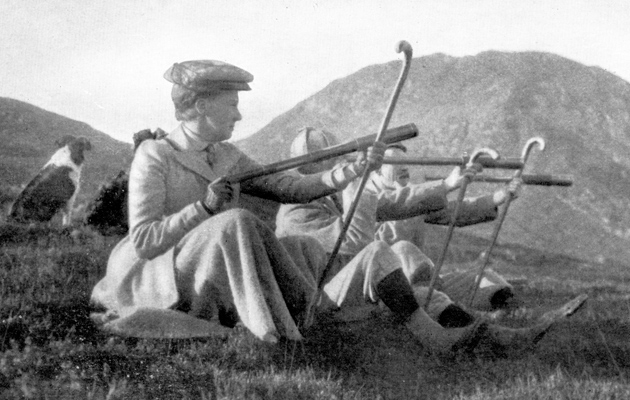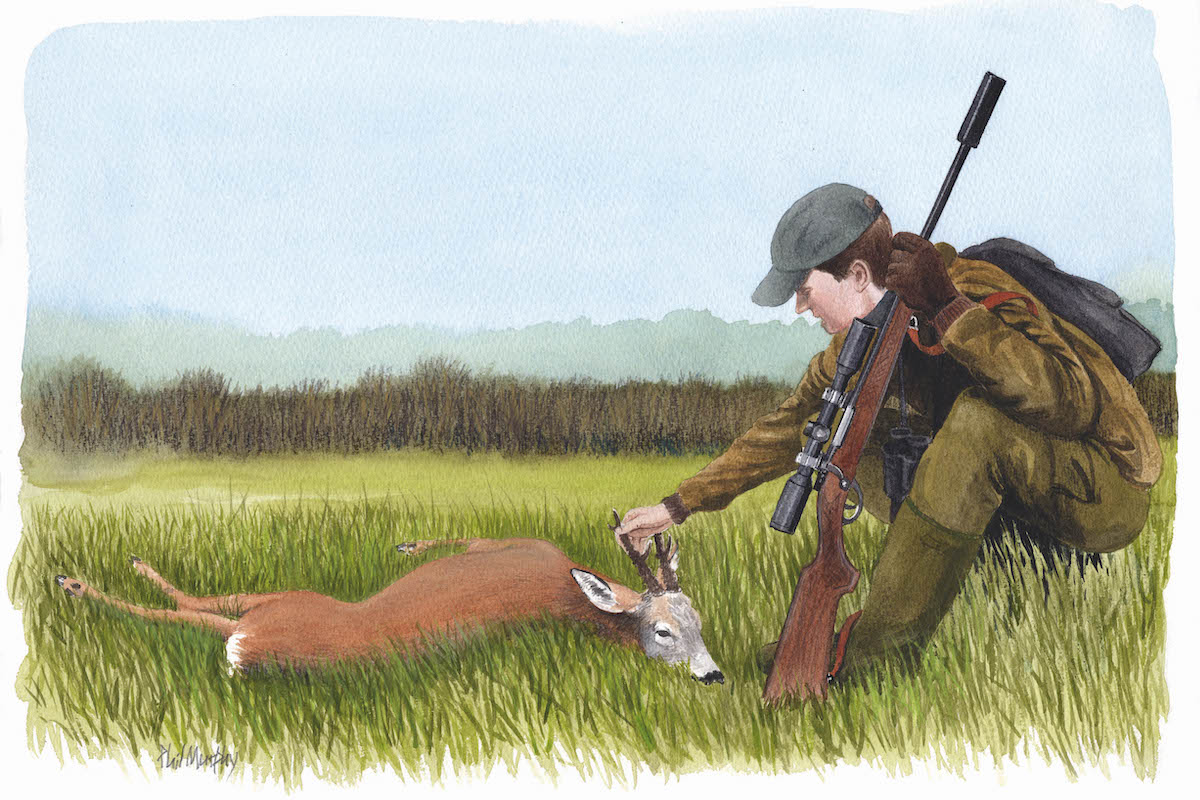Ladies who stalk
The idea of a huntress stems from Roman mythology, but over the years some of the most formidable stalkers have been real women, writes Iain Thornber

Lady Breadalbane and stalkers spying on Blackmount
It is a well- established fact that women are better than men at catching heavy and large numbers of salmon.
It all began with Diana the Huntress. In Roman mythology Diana was associated with wild beasts, woodland, and the power to talk to and control animals. Though her name was eventually supplanted by Hubert, eldest son of the Duke of Aquitaine, who was declared patron saint of hunting and, interestingly enough, of butchers as well, her legacy survived and she re-emerged as the Goddess of the Chase in 14th century renaissance Europe.
Anne Boleyn, one of King Henry VIII’s many wives, was a skilled archer. Her decapitated head would eventually lie in an elmwood box in which arrows were once stored. european women of noble birth were taught to ride and hunt from childhood. During the Baroque period, marriages were plotted and arranged at extravagant hunting pageants in the forests in order to expand royal dynasties.
One of the earliest weapons, the bow and arrow, was used to kill deer. A rare woodcut from a work published in 1555 shows a Lapp woman and her husband on skis, each holding a composite bow fitted with an arrow, their hunting dog at their side and the startled quarry running above them. Hunting remains popular in Finland, where, despite its small population, there are at least 10,000 women registered as hunters.
Guns over knitting needles
Initially early Victorians looked on women who hunted as “not quite nice”. Lady Mildred Boynton, one of the contributors to a famous book, Ladies in the Field (1894), stated it well when she wrote: “a few years ago, a ‘shooting lady’ was almost as rare as the great auk; if here and there one member of the sex, more venturesome than her fellows, were bold enough to take to the gun in preference to the knitting needle, she was looked upon as most eccentric and fast, and underwent much adverse criticism.” Lady Boynton urged the novice lady shooter to go straight to Mr Purdey in London for her firearm. She also suggested that the rifle should be fitted with an india- rubber butt-plate to avoid a bruised shoulder and arm, which, “if you happen to be going to a ball, does not perhaps add to your beauty”.
Highland huntresses
The primeval highland landscape provided the backdrop to many forays among the stags by the early huntresses. Queen Victoria, though not a stalker herself, wrote vivid descriptions of accompanying Prince Albert to the hill in Leaves from the Journal of Our Life in the Highlands. Her passion for the mountains helped cultivate an environment that would produce a special breed of highly adventurous women.
The first was Alma, wife of the seventh Earl of Breadalbane, who owned several huge sporting estates, including the 100,000-acre Black Mount on Rannoch Moor. Here she indulged her passion for shooting, which reached its zenith on 30 September, 1897 when, dressed in a heavy, full-length, tweed coat, she shot six stags with six bullets. Her memoir, The High Tops of Black Mount, became a classic and recounts her many years of deerstalking in the Scottish Highlands.
On the heels of Lady Breadalbane came Mrs Peter Fleming, who, on Black Mount Forest, killed her 600th stag at the beginning of the 1968 season. By the time it had ended she added a further 23 to her total. When Mrs Fleming finally gave up stalking in 1985, aged 84, she had accounted for 930 stags.
Ladies who stalk
Other ladies who stalked in old age and who have since “gone to the hill” themselves were Mrs Jessie Tyser of Gordonbush, Sutherland, who died in 1978 at the age of 85 and Irene, Marquesa de Torrehermosa, who owned Achanalt estate in Ross-shire. The doyenne of them all, though, was Mrs Patrica Strutt of Kingairloch whom I had the pleasure of stalking with for the last 25 years of her life. She shot her first stag at Kingairloch in 1930 when she was 19 and her last shortly before her death in 2000. at the age of 80 she sold her “Granny Bonds” and with the proceeds bought a custom-built .25-06 rifle made for her by David Lloyd, the renowned Nottinghamshire gunsmith.
A superb Shot and extremely quick, Mrs Strutt killed around 2,000 deer over open-sights, a record broken only by Anne, the 86-year-old Duchess d’Uzès of France, who died in 1933 having shot slightly more in her lifetime. On one occasion when she was 84, Mrs Strutt shot in the neck — within five seconds — two stags that were lying down 250 yards away. She lived for the 20 September of every year. It was her birthday and also “the day of the roaring”, when the rut begins. “Not nearly so romantic now that I can’t hear them roaring,” she often used to say to me after she became deaf.








